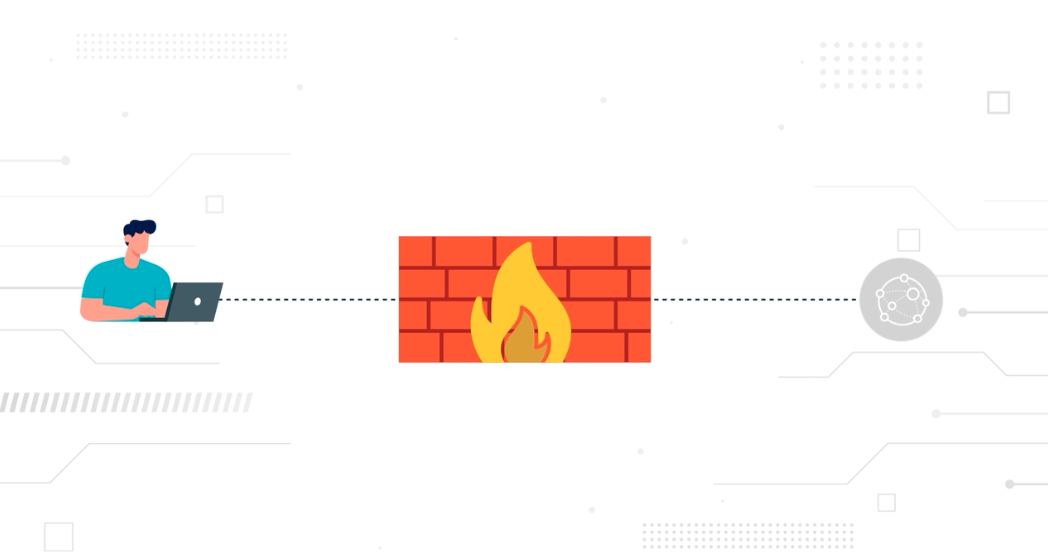- 1. What do firewalls do, and how do they work?
- 2. What are the different types of firewalls?
- 3. What features do firewalls include?
- 4. What benefits do firewalls provide?
- 5. What challenges come with using firewalls?
- 6. How do firewalls compare with other network security technologies?
- 7. Firewall FAQs
What Is a Firewall? [Definition & Explanation]
Firewalls act as barriers between private and external networks, checking and filtering data based on set security rules. Using these rules, firewalls decide if they should allow, block, or drop the data to protect the network.
Form factors include hardware, software, or a mix of both. This process ensures only safe, legitimate traffic gains entry.
What do firewalls do, and how do they work?
Firewalls monitor and manage network traffic.
Their job is to protect network devices (also referred to as hosts). That can mean computers, servers, or anything else with an IP address.
Basically, firewalls filter traffic to determine what should be allowed and what should be blocked.
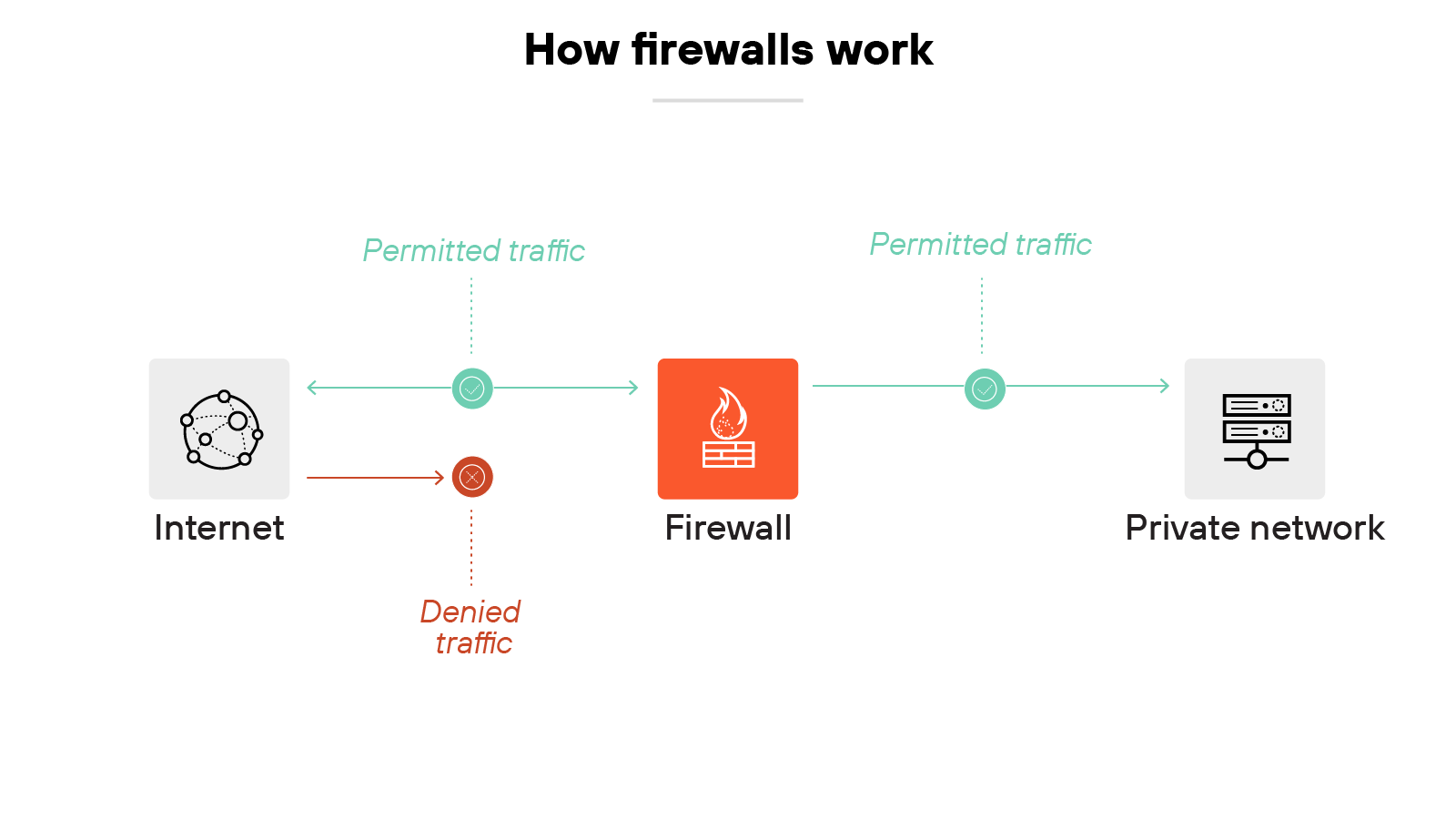
To break it down further, a firewall uses rules to make those decisions. Rules can be based on IP addresses, protocols, ports, or other packet-level details. If a packet violates the rules, the firewall blocks it.
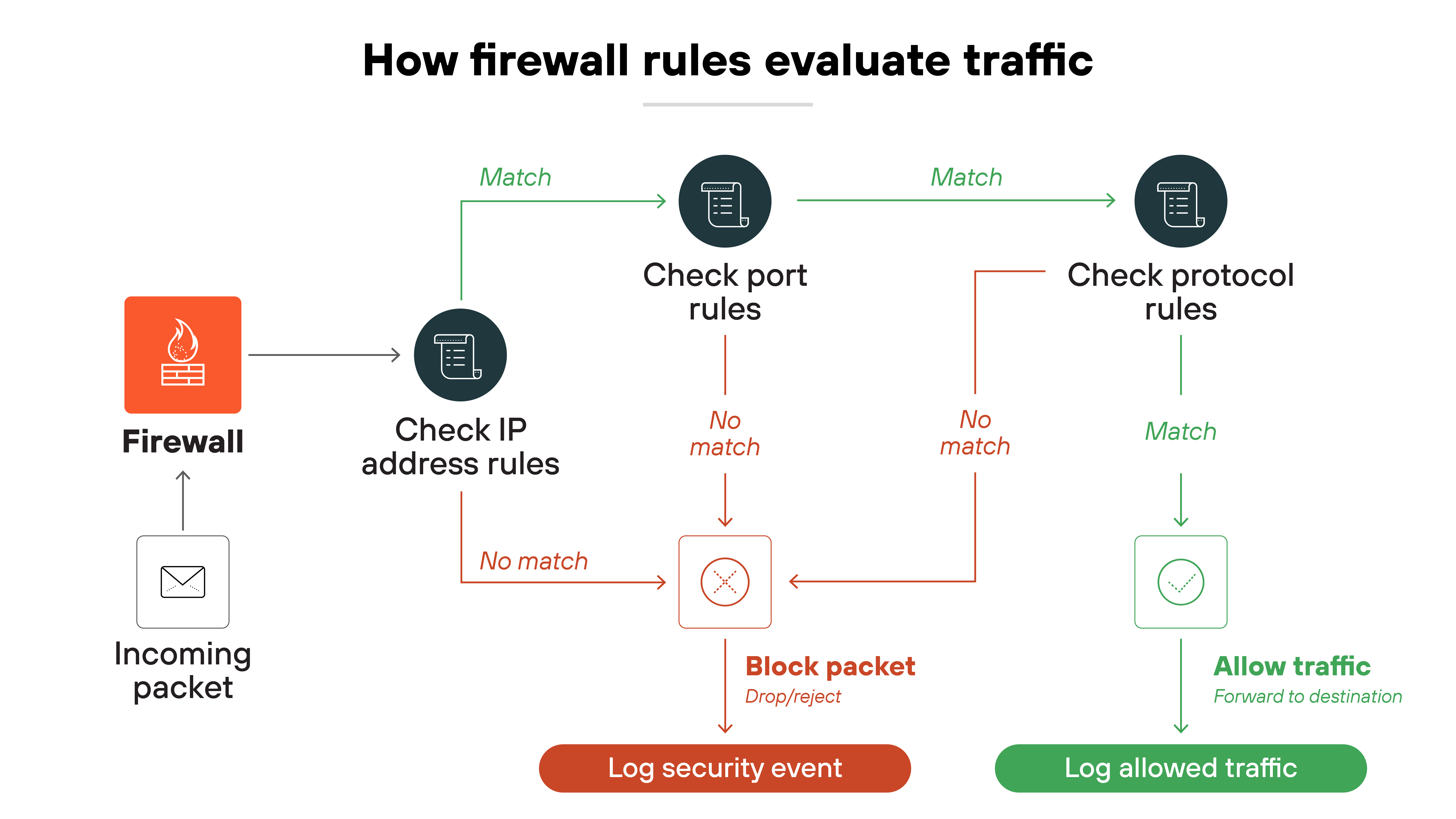
More advanced firewalls don't just look at packets one by one. Instead, they use stateful inspection, which means they track the entire session that a packet belongs to. That way, they can understand if packet behavior is expected or unusual.
Like this:
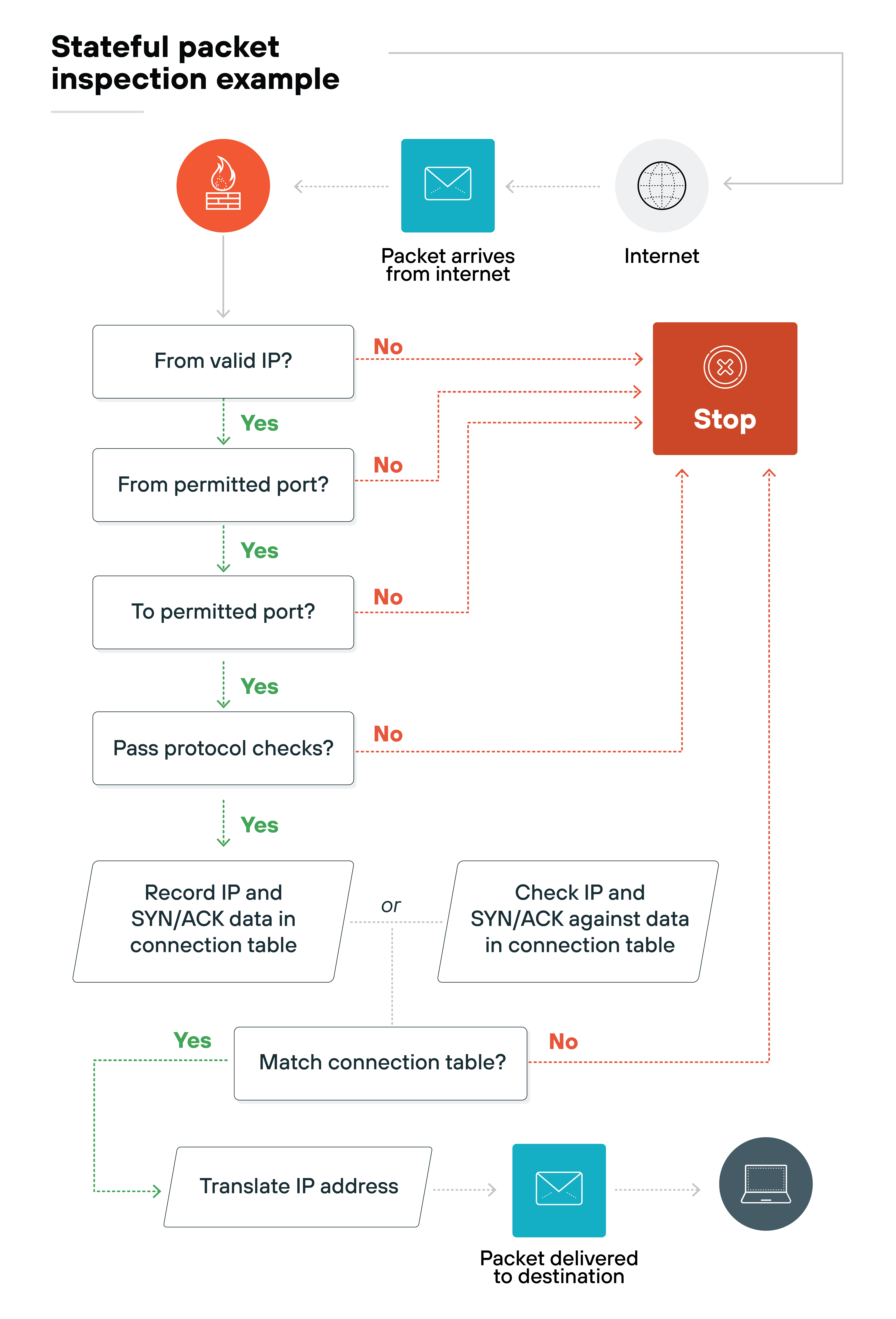
This matters because looking at the full context helps detect more complex or stealthy threats.
Firewalls also rely on threat intelligence. They compare traffic against databases of known malicious signatures. If a match is found, the firewall blocks the traffic.
They also treat traffic differently based on direction.
North-south traffic comes from outside the network and is more likely to carry threats, so it's inspected closely. East-west traffic moves within the network and is often overlooked—but if attackers get in, they can use it to move laterally.
Which is why inspecting internal traffic matters too.
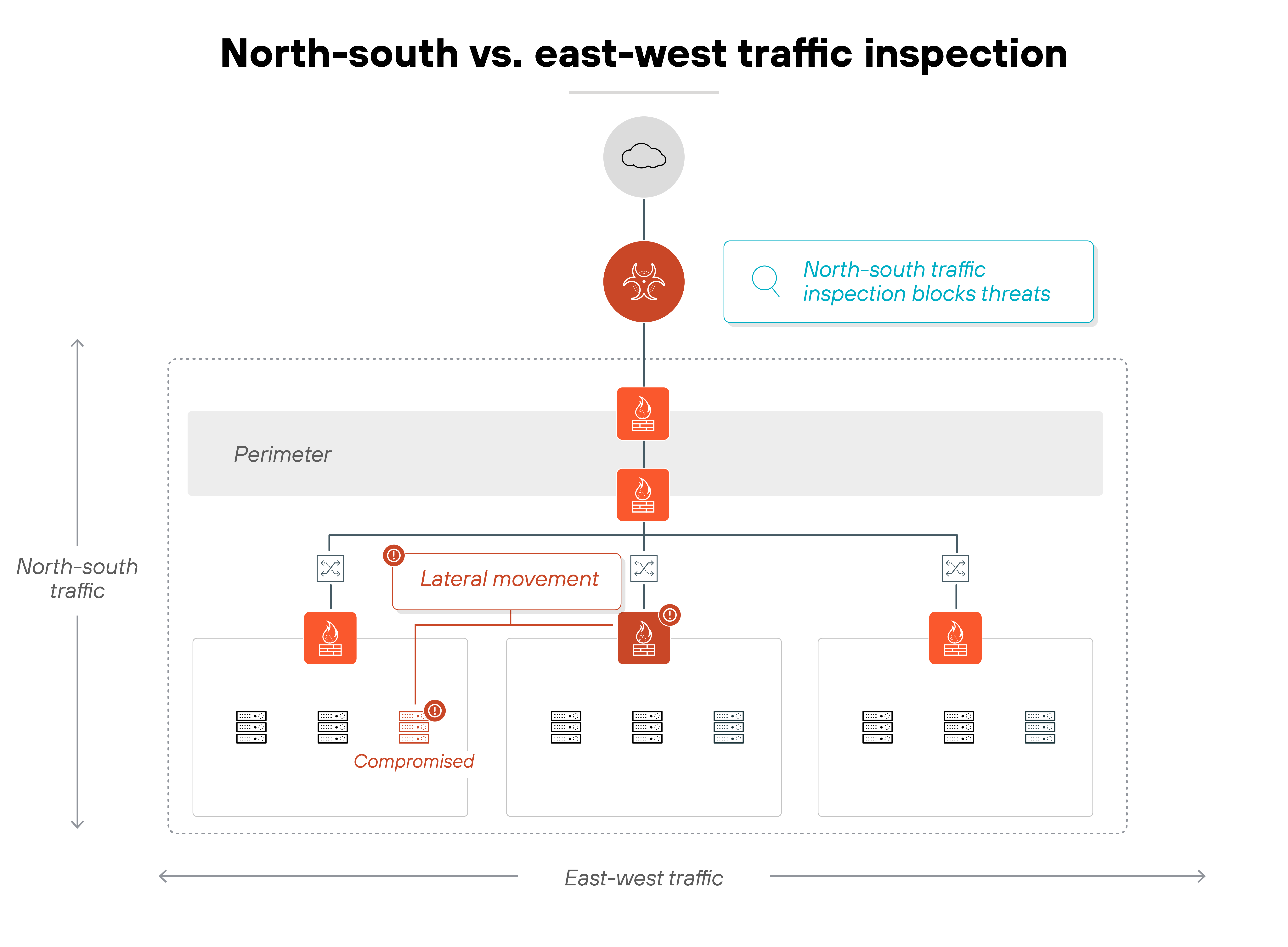
Not to mention:
Firewalls help enforce access control. Most organizations today follow the principle of least privilege so that users and devices only get access to what they need. No more, no less. It's one of the most effective ways to limit risk.
- What Does a Firewall Do? | How Firewalls Work
- What Are Firewall Rules? | Firewall Rules Explained
- The History of Firewalls | Who Invented the Firewall?
What are the different types of firewalls?
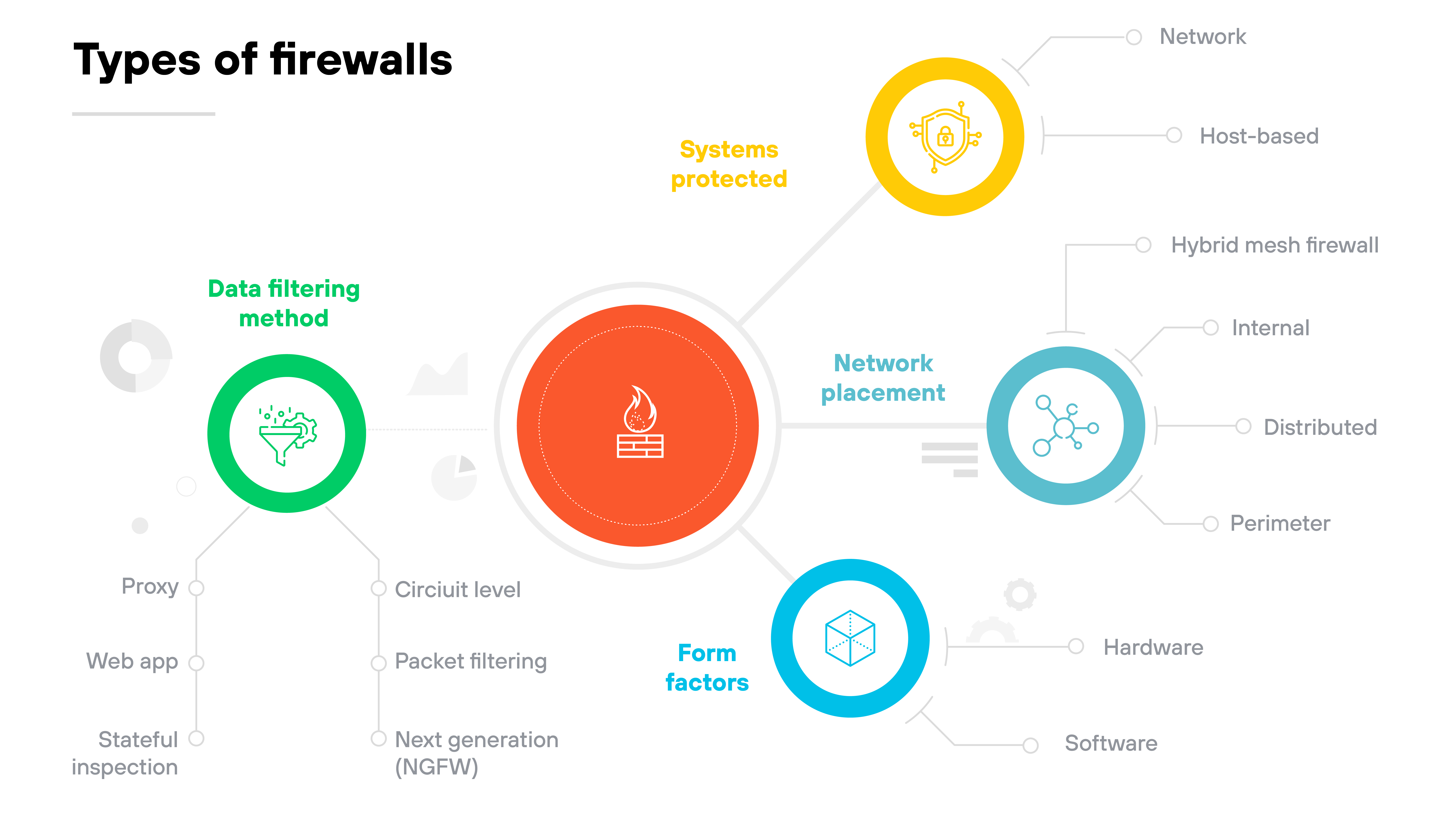
Not all firewalls work the same way. Some protect individual devices. Others monitor traffic for an entire network. Some are physical appliances. Others run in the cloud.
That's why they're generally categorized based on what they protect, how they're deployed, where they sit in the network, or how they inspect traffic.
Below, we'll break down the main types of firewalls across each of these categories:
| Types of firewalls | ||
|---|---|---|
| Category | Type | Description |
| Systems protected | Network firewall | Protects an entire network by inspecting incoming and outgoing traffic. |
| Host-based firewall | Installed on a specific device to monitor traffic to and from that host. | |
| Form factors | Hardware firewall | A physical device placed between network elements and connected devices. |
| Software firewall | A software-based firewall deployed on servers or virtual machines. Includes container firewalls, virtual firewalls, and managed service firewalls. | |
| Placement within infrastructure | Perimeter firewall | Placed at the edge of a network to manage traffic entering or leaving. |
| Internal firewall | Positioned within the network to monitor traffic between internal segments. | |
| Distributed firewall | A scalable approach where enforcement is applied across multiple devices. | |
| Hybrid mesh firewall | Firewalls deployed across on-premises and cloud environments in a coordinated, distributed architecture. | |
| Data filtering method | Packet filtering firewall | Checks each packet against rule sets and allows or blocks based on criteria. |
| Stateful inspection firewall | Tracks the state of active connections to evaluate traffic in context. | |
| Circuit-level gateway | Verifies session-level connections before allowing ongoing communication. | |
| Proxy firewall | Intercepts and evaluates application-layer traffic between client and server. | |
| Next-generation firewall (NGFW) | Combines traditional firewall features with advanced capabilities like IPS and traffic decryption. | |
| Web application firewall | Filters HTTP traffic to and from web apps to block attacks like cross-site scripting or SQL injection. | |
These distinctions aren't just technical trivia. They reflect how firewalls have adapted to different layers, architectures, and threats.
Knowing the differences helps you make sense of where each firewall fits and what problems it's designed to solve.
What features do firewalls include?
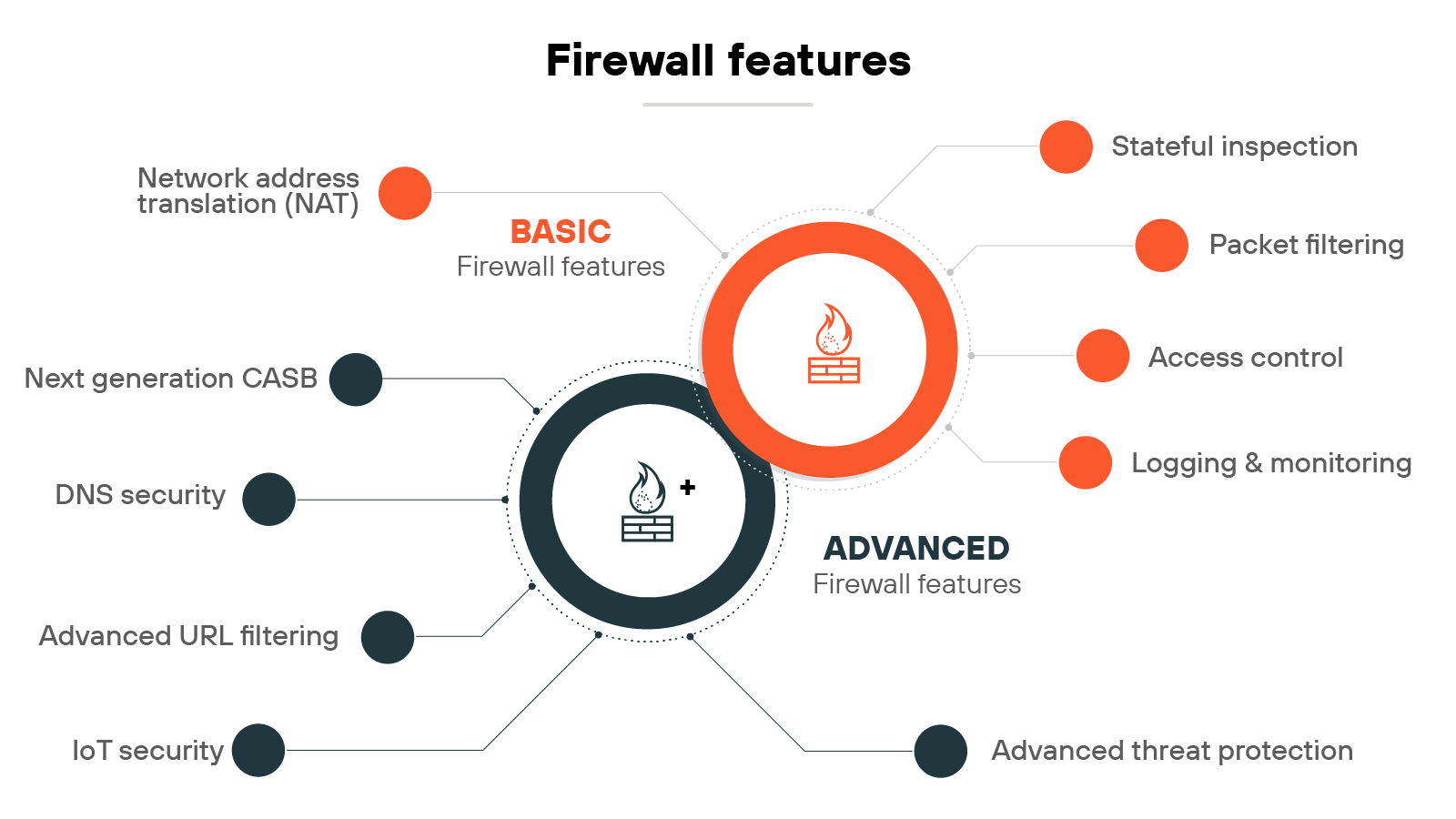
Firewalls have evolved. What started as basic traffic filtering has grown into a wide range of capabilities designed to meet different levels of risk.
Some firewall features are foundational: packet filtering, logging, access control, etc.
Others are more advanced, using modern technologies like deep learning and automation to stop sophisticated threats in real time.
Let's break down the primary firewall features into two categories—basic and advanced—and take a closer look at each:
| Firewall features | ||
|---|---|---|
| Category | Feature | Description |
| Basic | Packet filtering | Evaluates packets based on criteria like IP address or port to allow or block traffic. |
| Stateful inspection | Tracks the state of active connections to allow only legitimate traffic. | |
| Network Address Translation (NAT) | Modifies packet IP addresses to conserve addresses and hide internal network structure. | |
| Logging and monitoring | Records network activity for analysis and response to potential threats. | |
| Access control | Applies rules to regulate which users or systems can access network resources. | |
| Advanced | Advanced threat prevention | Uses deep learning to detect zero-day attacks and automate protection workflows. |
| Advanced URL filtering | Uses real-time deep learning to stop known and unknown web threats. | |
| DNS security | Applies ML and analytics to block advanced DNS-based attacks and reduce tool sprawl. | |
| IoT security | Segments and protects IoT devices using Zero Trust and contextual machine learning. | |
| Next-generation CASB | Secures SaaS apps in real time with deeper visibility and modern data protection. | |
On paper, many firewalls advertise similar features. But the depth, accuracy, and integration of those features vary widely.
What matters most is how well they work together to detect, prevent, and respond to modern threats in real time.
What benefits do firewalls provide?
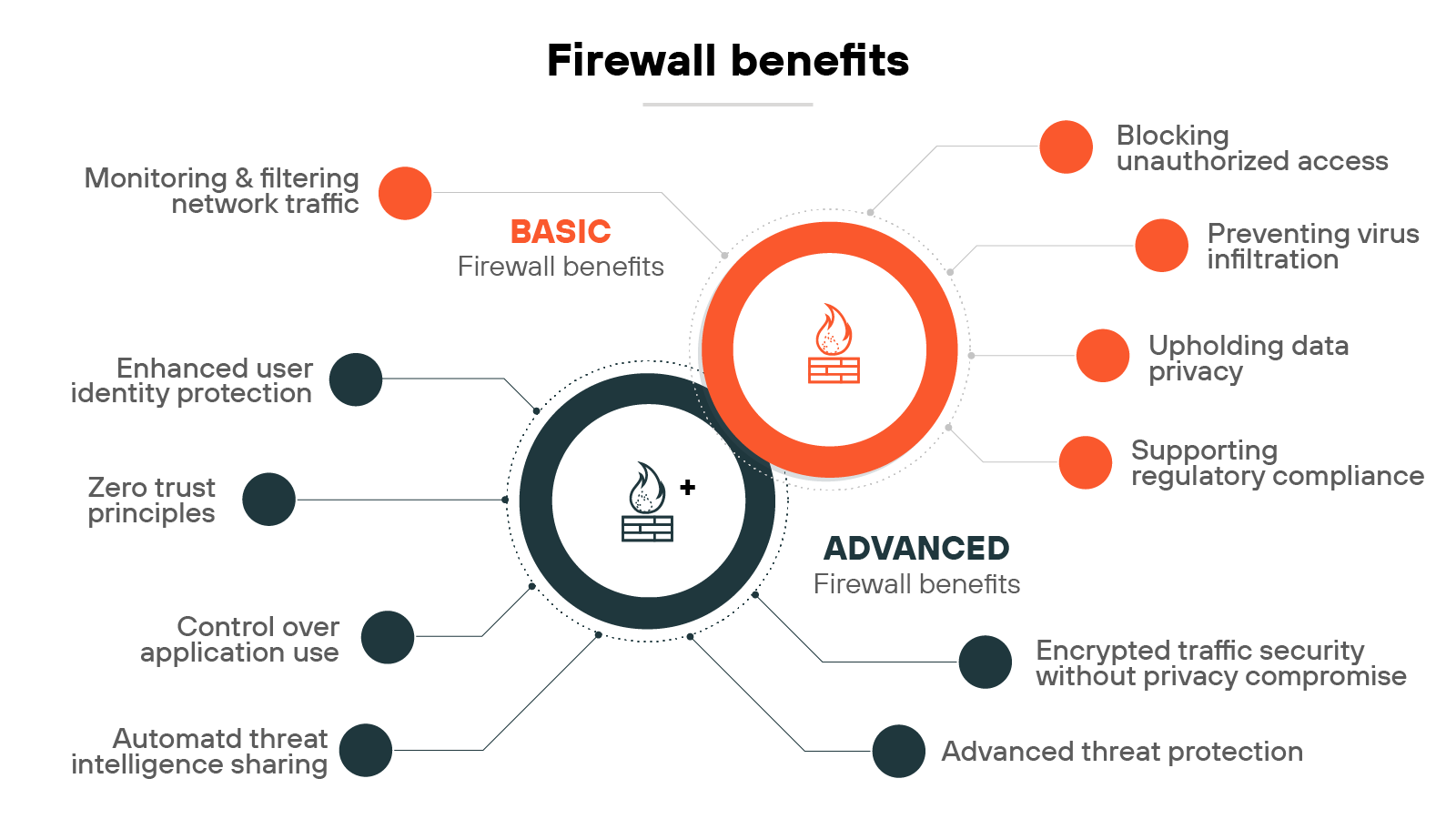
Firewalls help control traffic, reduce risk, and support compliance.
Some benefits are well established, like blocking malicious traffic, enforcing access controls, and maintaining data privacy.
Others reflect relatively newer capabilities: inspecting encrypted traffic, applying Zero Trust policies across the network, etc.
In other words:
The value of a firewall depends on what it can do and how it's used.
Below, we've grouped firewall benefits into basic protections and more advanced capabilities that support today's hybrid and threat-rich environments.
| Firewall benefits | ||
|---|---|---|
| Category | Benefit | Description |
| Basic | Monitoring and filtering network traffic | Inspects data packets and blocks harmful patterns using stateful inspection. |
| Preventing virus infiltration | Blocks known virus patterns and supports antivirus tools. NGFWs improve detection of advanced threats. | |
| Blocking unauthorized access | Applies access controls to limit interactions to trusted sources only. | |
| Upholding data privacy | Prevents sensitive data exposure by monitoring inbound and outbound traffic. | |
| Supporting regulatory compliance | Logs and controls access to sensitive data to support audit readiness and compliance. | |
| Advanced | Enhanced user identity protection | Applies security policies based on user identity for more precise access control. |
| Control over application use | Identifies and restricts app usage to approved applications only. | |
| Encrypted traffic security without privacy compromise | Inspects encrypted traffic for threats while preserving user privacy. | |
| Advanced threat protection | Protects against known and emerging threats across multiple attack vectors. | |
| Automated threat intelligence sharing | Detects and responds to threats using shared global intelligence feeds. | |
| Zero Trust principles | Applies continuous authentication and verification to reduce implicit trust. | |
Not every firewall delivers every benefit listed here. That's because firewalls are used in many different environments.
What matters is aligning capabilities with your network architecture, threat landscape, and operational needs.
What challenges come with using firewalls?
Firewalls aren't just a set-it-and-forget-it technology. They need to keep up with evolving threats, shifting traffic patterns, and changing business needs.
One of the first challenges is choosing the right type of firewall for each environment. Whether that's a data center, public cloud, branch, or hybrid setup. From there, the real work begins.
Misconfigurations are one of the most common and dangerous issues. Whether it's overly permissive rules, missing updates, or traffic filtering mistakes that leave gaps or create bottlenecks.
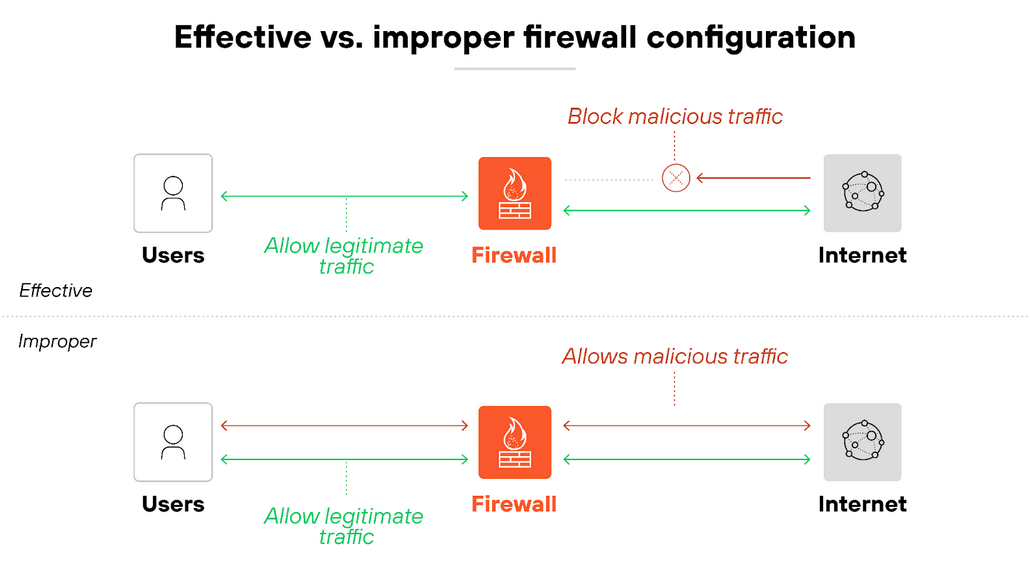
Plus, firewall rule sets grow over time. New policies get added, but old ones often remain. That leads to bloated configurations that slow performance, create conflicts, or block legitimate traffic. And tight rules can also cause false positives, which frustrates users and overloads IT teams with unnecessary alerts.
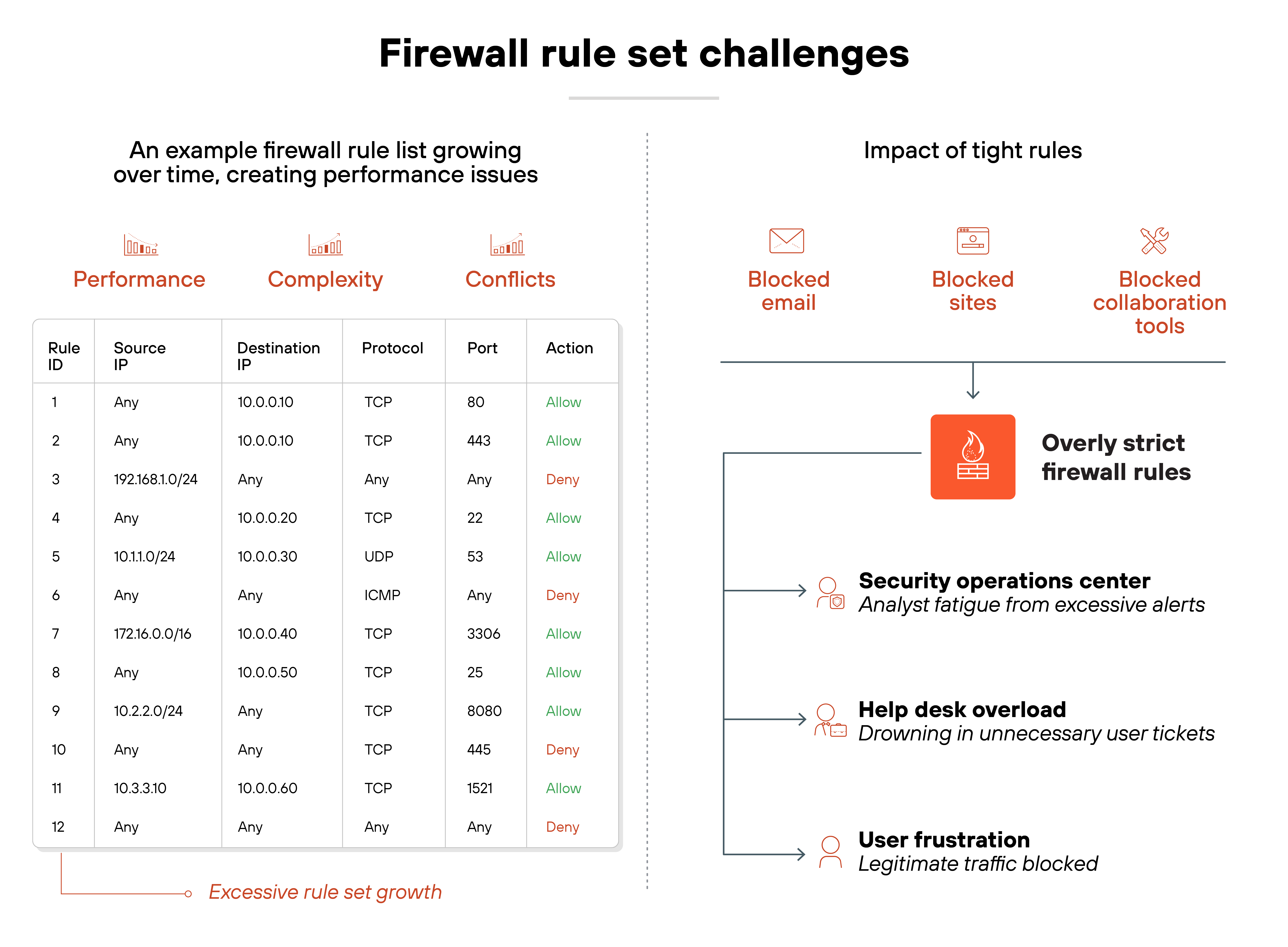
Meanwhile, performance demands continue to rise. Deep inspection, encrypted traffic analysis, and advanced features all require processing power. If firewalls aren't properly sized or tuned, throughput suffers.
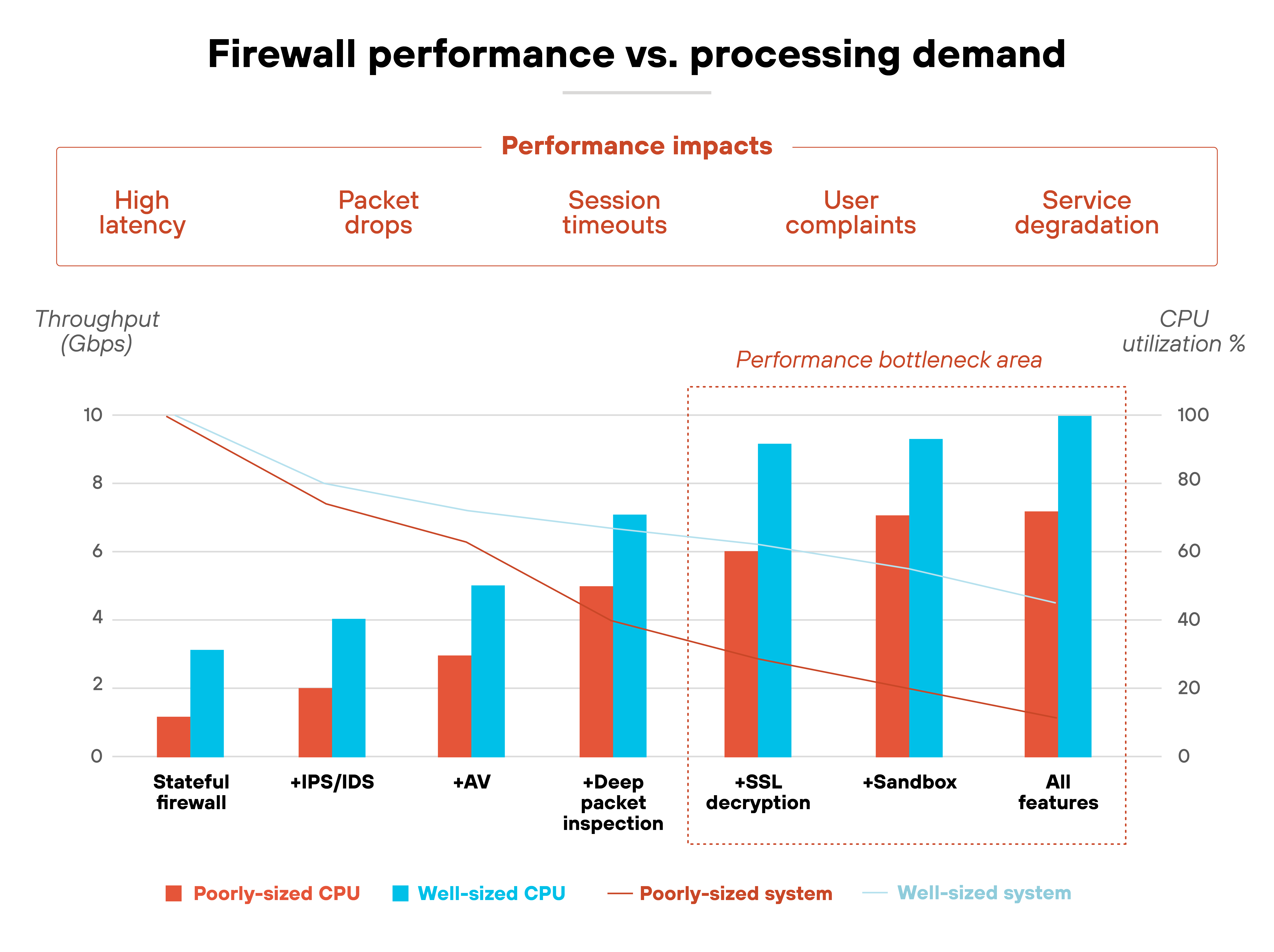
Even updates present risks. Regular patches and threat signature updates are critical. But poorly timed changes can disrupt traffic or introduce new issues.
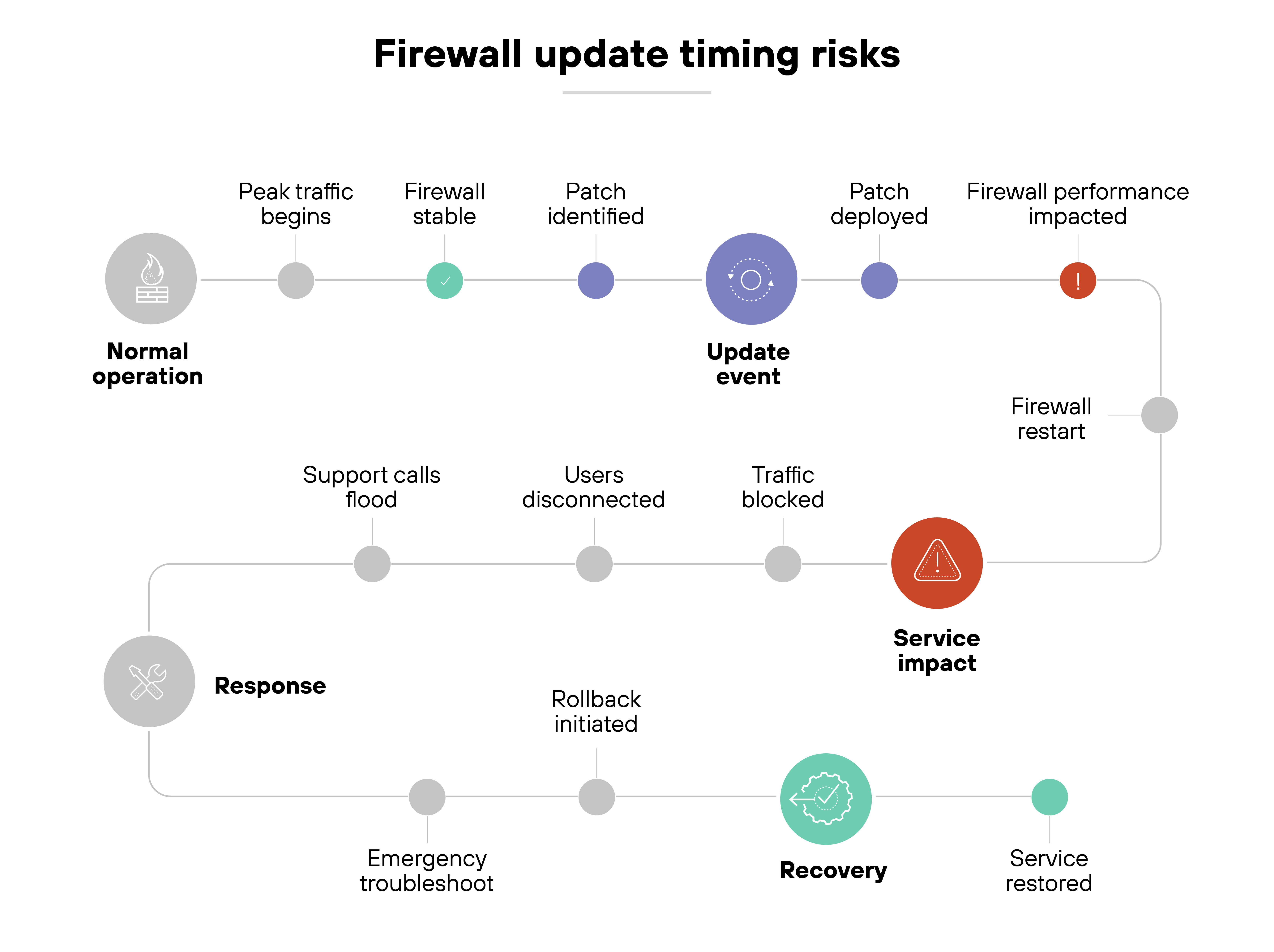
And underlying it all is one consistent challenge: translating business needs into clear, effective firewall rules. That's especially hard during infrastructure changes, when visibility is limited and documentation may be incomplete.
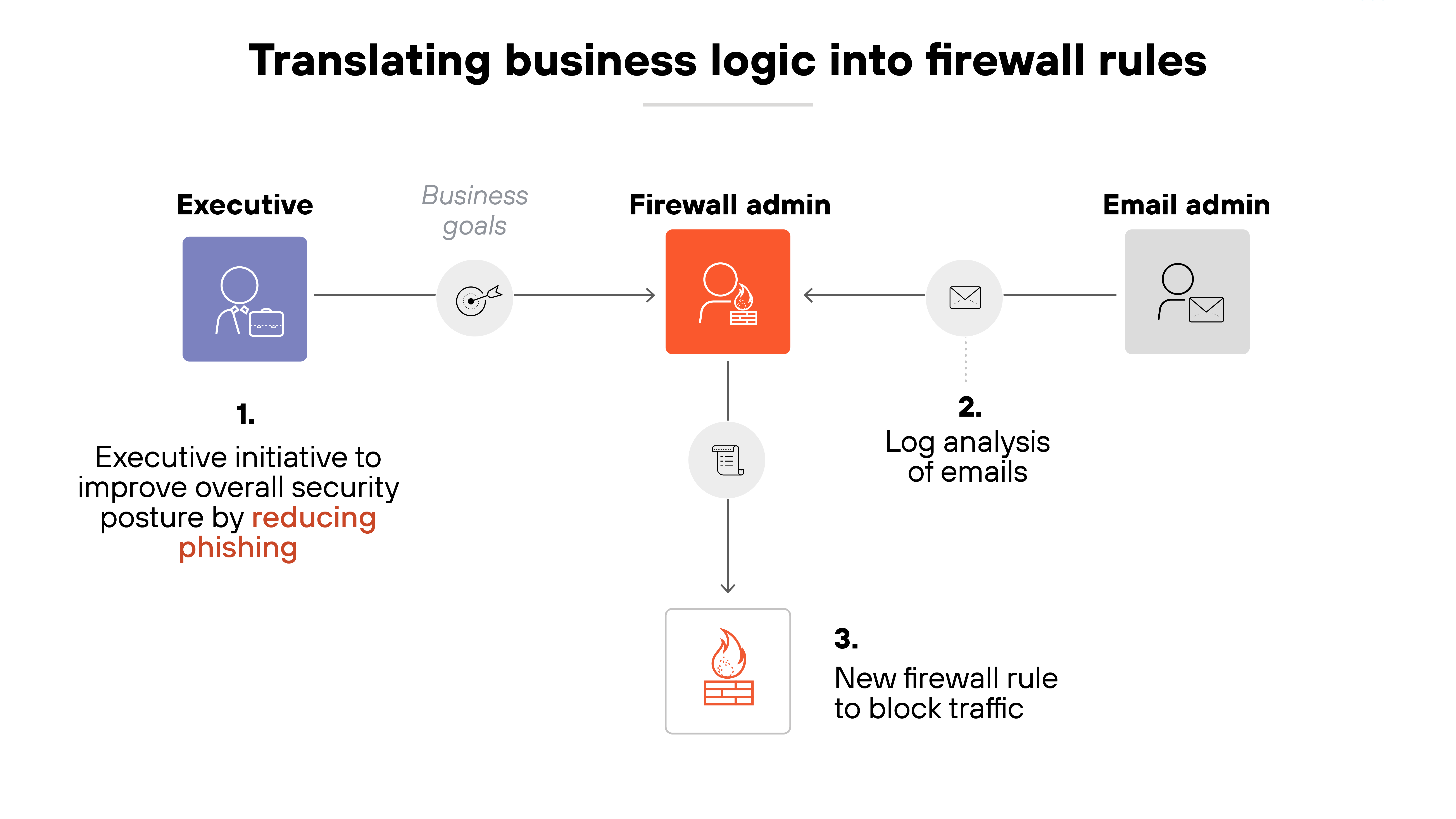
Bottom line:
Firewall management is an ongoing process. It takes constant tuning, review, and adaptation to keep protections strong without slowing the business down.
- How to Troubleshoot a Firewall | Firewall Issues & Solutions
- What Is Firewall Management? | A Comprehensive Guide
- What Is Firewall Configuration? | How to Configure a Firewall
- Key Firewall Best Practices
How do firewalls compare with other network security technologies?
Firewalls are often one of the first tools people think of when it comes to network security. But they're far from the only one.
From antivirus to web gateways to access control lists, each tool in the stack plays a distinct role. And while many overlap or integrate with firewalls, they aren't interchangeable.
Understanding the differences helps clarify what a firewall does—and doesn't—do. It also helps you spot where it fits in a layered defense strategy.
The table below breaks down how firewalls compare to other common technologies across five dimensions: purpose, deployment, traffic visibility, control, and overlap.
| Firewalls vs. other network & security technologies / functions |
|---|
| Technology | Antivirus | IDS | IPS | NGFW | UTM | Proxy server | SWG | VPN | WAF | Router | ACL |
|---|---|---|---|---|---|---|---|---|---|---|---|
| Primary function | Scans and removes known malware from endpoints | Monitors traffic for suspicious activity | Detects and blocks known attacks | Inspects traffic using application, user, and content context | Combines firewall, antivirus, and intrusion prevention | Forwards traffic through an intermediary server | Filters outbound web traffic based on policy | Encrypts traffic for secure remote access | Filters HTTP traffic to web apps and blocks exploits | Directs traffic between networks | Controls access by specifying which traffic is allowed |
| Level of control | Endpoint-level | Network-level monitoring only | Network-level blocking | Deep, contextual inspection and enforcement | Moderate control with basic unified enforcement | Traffic relay with optional filtering | Policy-based access to internet content | Tunnel-level encryption and access control | Application-level filtering | Basic routing decisions | Packet-level filtering |
| Traffic visibility | Scans local files and memory | Observes traffic for anomalies | Analyzes known exploit patterns | Full visibility into traffic, including encrypted data | Moderate visibility | Limited unless combined with logging/monitoring | URL-level visibility and categorization | Limited visibility into application traffic | Full HTTP/S traffic inspection | No inspection | No inspection |
| Deployment scope | Device-level | Inline or passive network sensor | Inline, often combined with IDS | Network-wide, hybrid environments | All-in-one perimeter devices | Edge or cloud-based | Cloud-based or appliance | Client or gateway-based | Perimeter or cloud-based | Physical or virtual appliance | Integrated into routers/firewalls |
| Common use case | Protecting individual devices from malware | Alerting on suspicious network behavior | Blocking known network-based attacks | Centralized security policy enforcement | Simplified security for SMBs | Hiding user IP, filtering traffic | Blocking malicious or non-compliant web access | Securing remote workforce | Protecting web apps from OWASP threats | Routing LAN/WAN traffic | Enforcing basic network security rules |
| Strengths | Detects and removes file-based malware | Detects unknown threats via heuristics or behavior | Stops known exploits in real time | Application-aware, identity-based control | Easy deployment with broad protection | Anonymity, content caching, filtering | URL filtering, DLP, malware prevention | Secure tunneling, remote access | Shields web apps, prevents common attacks | Simple traffic direction | Explicit rule control, lightweight |
| Limitations | Can't stop network-based threats | Doesn't block traffic by itself | Needs tuning to avoid false positives | Complexity, resource-intensive | Performance, limited advanced control | Doesn't inspect deeply by default | Limited to web traffic | Doesn't inspect traffic content | Limited to web app layer | Not security-focused | Easily misconfigured or bypassed |
No single tool can secure an entire environment. But knowing how firewalls interact with the rest of the security stack makes it easier to design defenses that are both complementary and complete.
